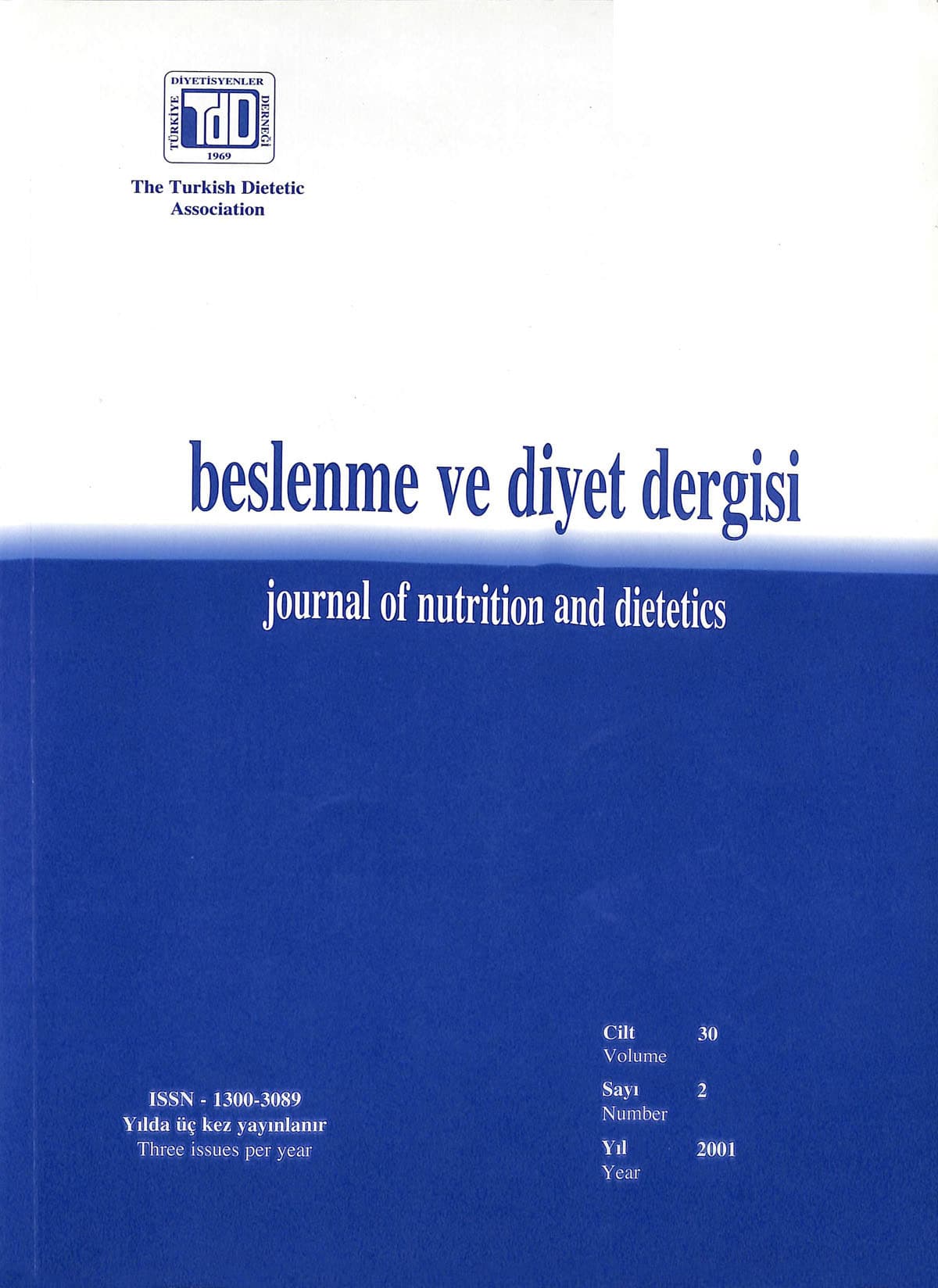Assessment of Nutritional Status Using Anthropometric Measurements, Equations for Predicting Stature and Body Weight in Elderly
Keywords:
Elderly, anthropometry, stature, body weight, equationsAbstract
Decreases in stature and body weight are known to occur vvith old age. Accurate measıırements of stature and vveight are important for the deternıination of several nutritional indices (weight for stature, body mass index ete), determination of basal metabolic rate, etıergy recjuirenıent and energy expenditure. This study was condueted to assess the nutritional status using anthroponıetric measıırements and to develop equations for predicting statııre (knee height, calf and upper arm circumference and skinfold thickness) for the elderly. The sample consisted of 250 anıbıılatory volunteer elderly people, 100 men and 150 vvomen, aged 65 yearS and över. Each subjects body weight, height, skinfold thıcknesses (triceps, biceps, subscapular and snprailiac), circumference measurements (mid-upper-arm circumference, waist, hip and calf circumferences) and segment length measurements (knee height, shoulder-elbow and elbow-wrist lengths) were measııred. Body mass iııdex, waist/hip ratio, body fat and fat free mass by varioııs methods, arm muscle area, arm muscle circumference were estimated. Mean (x ± S) ages were 73.0 ± 6.7 and 72.2 ± 4.8 years for men and women, respeetively. Multiple regression analysis demonstrated a highly significant linear relationship betvveen knee height, age and stature in men (R2: 0.727) and vvomen (R2: 0.565). The R2 indicates that about 78% of the variabilty in weight in men and 63.3% in vvomen is explained by calf, upper arm circumferences and subscapular skinfold thickness. it coııld be concluded that; obesity is an important problem among vvomen. Estimation of stature and body vveight from equations provide a simple, cjuick, accurate and reliable means of estimating stature and weight fo r elderly, especially for bedridden subjects.

